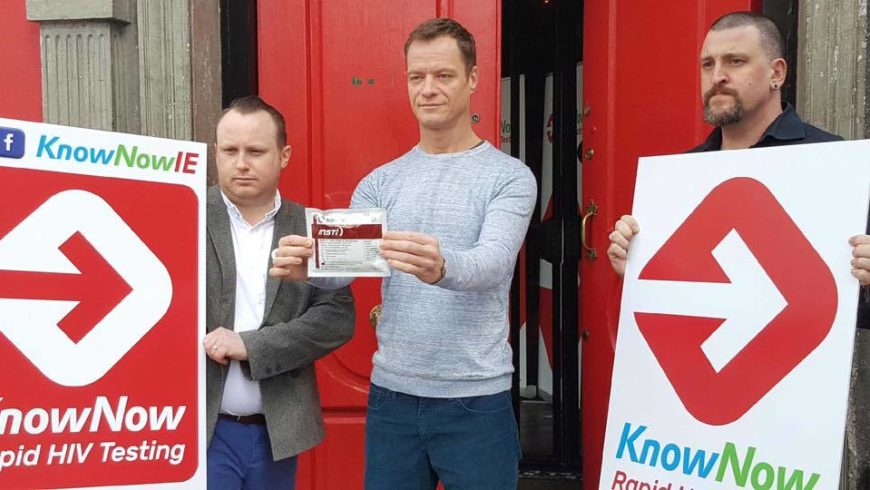Over the past two years new HIV infections among Irish men who have sex with men have increased at an alarming rate in Ireland, with almost two new diagnoses every day in the first six months of 2016.
So, how do we tackle what is fast becoming a new epidemic, and what went wrong to get us to this point?
Crisis Point
Recent headlines about rising HIV rates in Ireland, and indeed across the globe, may have come as a shock to the general public but the news is nothing new to the country’s sexual health campaigners
Those headline-grabbing statistics released by the Health Protection Surveillance Centre (HPSC) in October show that there were 273 HIV diagnoses in the rst six months of 2016. This compares to 283 in the latter half of 2015 and 203 in the rst half of that year.
Of those 273 new diagnoses, 222 were male and 129 of those were men who have sex with men (MSM). This group comprises gay and bisexual men but also MSM who engage in same-sex sexual encounters but don’t identify as gay or bisexual. And, somewhat surprisingly, the median age of those newly diagnosed was 35.
Feckless MSMs
Anecdotal evidence would suggest that older MSMs – specically ones who came of age or lived through the terrifying ‘Aids Kills’ public health campaigns of the 1980s and early ’90s – are often the most diligent about maintaining their sexual health.
This has led to the unfair, not to mention factually incorrect, impression that it’s chemsex-having, app-cruising, feckless young men who are responsible for the increase in new HIV infections.
As the recent statistics show, this is simply not the case.
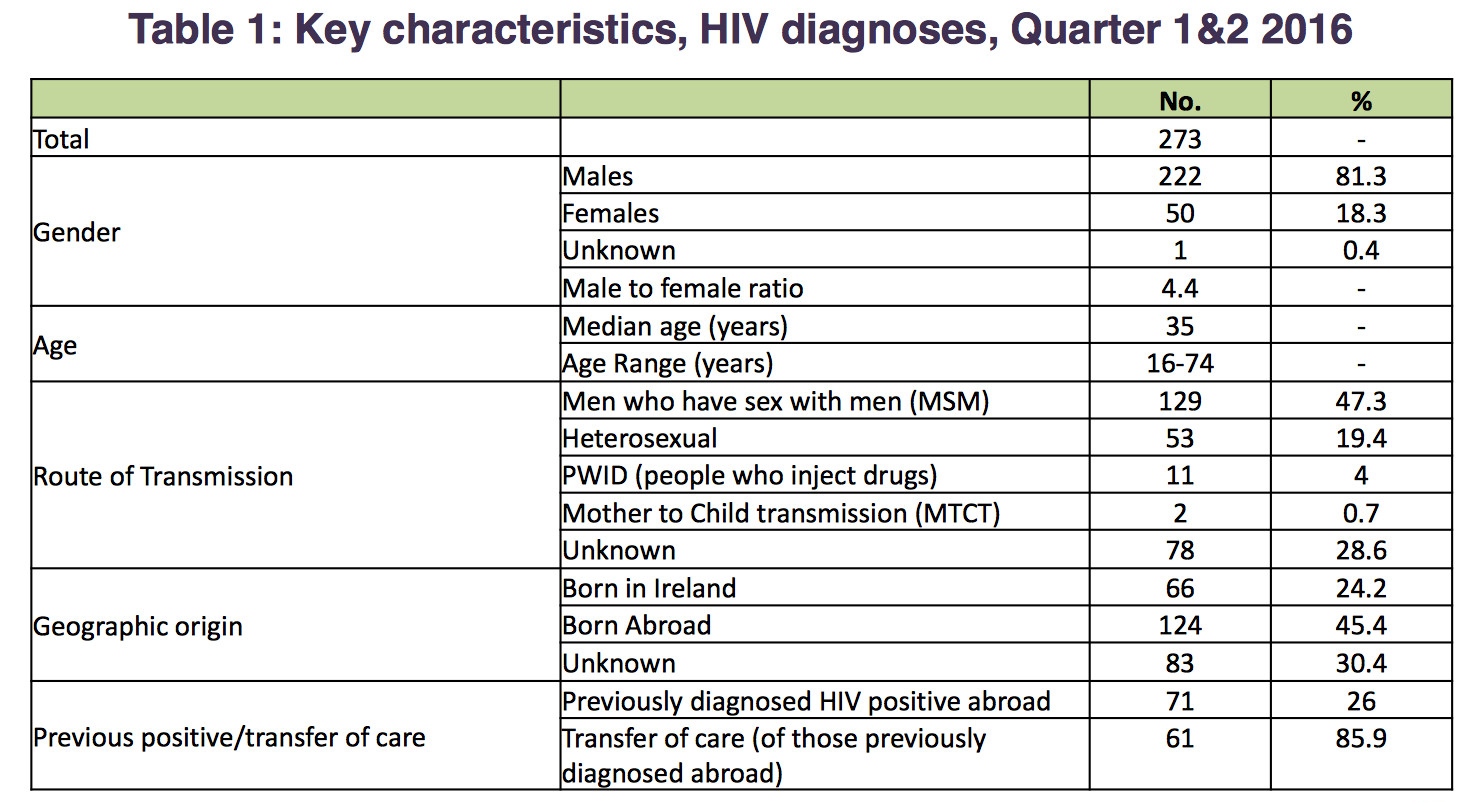
International Increase
The sharp increase in new HIV diagnoses isn’t just limited to Ireland. In February of this year, America’s CDC (Centre for Disease Control) released a report stating that if current diagnosis rates continue, one in two African American MSMs will be diagnosed with HIV in their lifetimes.
The report, which analysed data from 2009 to 2013 of HIV and mortality rates among different risk groups, also found that one in four Latino MSMs and one in 11 white MSMs will also be diagnosed.
Figures released by Public Health England, also released in February, revealed that one in twenty MSMs across the UK are HIV positive, with that figure rising to one in 11 in London.
Hook-Up Apps
It’s clear that HIV rates are increasing in some places (though it must be pointed out that overall, HIV rates are down). But why?
The popularity of ‘hook-up’ apps like Grindr or Scruff are often cited as a potential contributing factor, though scant evidence exists to support this.
A recent Unicef report about HIV among adolescents in Asia and the Pacific suggested that, based on anecdotal evidence, an increase of casual sex with multiple partners found through apps like Grindr (or the Chinese equivalent Blued) might be partly responsible for the one-in-eight new HIV infections amongst young people/adolescents.
Keep reading to see how the interpretation of HIV statistics can change their meaning.
Interpreting The Stats
While the rise in HIV infections is “concerning”, careful interpretation of the data is needed in order to get an accurate appraisal of the situation, says HIV Ireland‘s Susan Donlan.
“We’re seeing increases in HIV infection among MSMs, but what we’re also seeing is many men coming from Latin America who have previously tested HIV positive, who have is transferred their HIV care to a clinic in Ireland.
“So, when we look at it that way, you can ‘re-do’ your figures. Twenty-six percent of the men (71 men) who tested positive in 2015 were previously diagnosed and just transferred their care. So that’s one way of interpreting it.
“It’s about looking at the prevalence rate and what we’re seeing is that the prevalence has always been around two to three percent, so two to three percent of men entering the clinics are testing positive and that hasn’t changed, even though the number of men testing has gone through the roof.”
Increased Capacity
An increase in the availability of testing facilities – the Gay Men’s Health Service recently added a Monday afternoon free sexual health clinic to its existing Tuesday and Wednesday clinics, together with the high-profile Know Now campaign which allows users to discover their status moments after undergoing a simple pin-prick test – has led to an inevitable increase in HIV diagnoses.
“Our Monday clinic has increased our testing capacity, which is brilliant, so with increased testing capacity we’re also going to have increased pick up rates,” says Siobhan O’Dea, head of GMHS.
“When you see an increase in foot-fall in clinics,” confirms Donlan, “you’re sure to see an increase in HIV infection.”
Are MSMs missing the message? Keeping reading to find out.
Missing The Message?
So, it appears that the increase in infection rates could be linked to an increase in sexual health awareness and testing, but what if the opposite is also true?
What if the rising infection rates are due to the inability of those organisations advocating sexual health to adequately get their messages across to those most vulnerable to infection? Are current sexual health campaigns doing enough?
“I don’t really know much about the current campaigns,” says Robbie Lawlor, HIV advocate and former Mr Gay Ireland, “and as someone living with HIV, if I don’t know the current campaigns, then there’s an issue.”
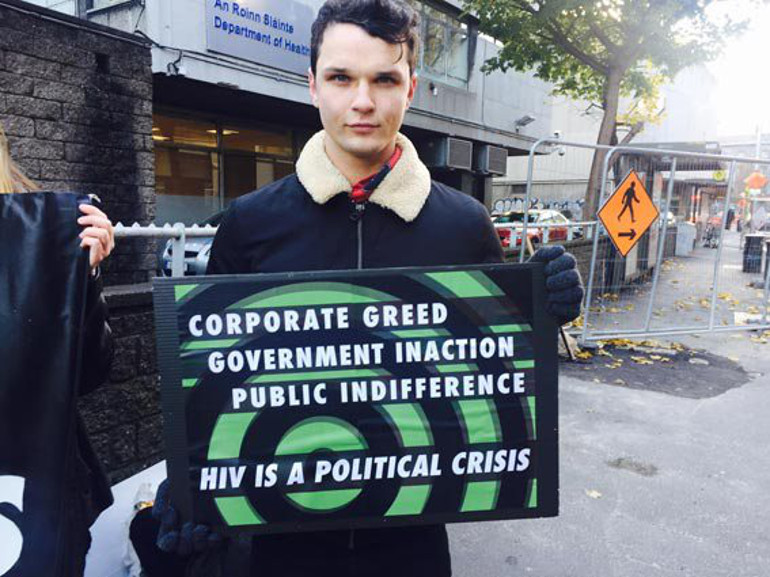
LGBT Sex-Ed
Lawlor cites a lack of LGBT-specific sexual and reproductive health education in schools as a crucial omission in the fight for sexual health.
“Where’s the campaign lobbying the government to have comprehensive sexual and reproductive health education in schools that is LGBT-specific?
“I know they have an LGBT component, but from what I gather from my friends who work in the area, the only additional thing now is that they show that there’s an anus in the diagram of the anatomy.
“That’s the only difference. What are we to get from that? I can’t remember at all in secondary school learning about LGBT sexual health, or specific sexual health, or the higher risks of what anal sex can spread. Never.”
Educate
Education, of both young and old, clearly plays a crucial role in HIV rates, by determining the choices people make.
“Sometimes I think we think people know more than they do [about sexual health] and sometimes they won’t ask questions,” says GMHS’s O’Dea.
“There’s so much information out there on the Internet but they genuinely don’t realise how easy it is to get STIs or how easy it is to protect themselves. For example, vaccinations for Hepatitis B – those are available and free to stop somebody from picking up a preventable virus.”
Is diabetes a less manageable disease than HIV? Keep reading to find out.
Medically Manageable
One controversial question remains unposited, but firmly in many minds: is it possible that recent efforts to de-stigmatise HIV/Aids may be partly responsible for the resurgence of HIV?
By attempting to stave off discrimination against those living with HIV, have we as a (Western, First World) society forgotten that HIV is still a problem? Have we reached a point where HIV is on par with diabetes to some people?
“I don’t really think so, no,” says O’Dea. “I genuinely think anybody who picks up HIV – I know the people we see in the clinics – they are shocked and they are upset, It’s a life-long condition that you have to live with.
“I have yet in my career to see somebody who said, ‘Oh, you know what, it’s fine, there’s a pill, I’ll be grand’.”
Diabetes Is Worse
“Actually,” says Lawlor, “any health consultant will tell you that diabetes is worse as a medical condition than HIV.
“Medically, HIV is one of the most manageable and treatable conditions if caught early, so that’s why we encourage getting tested, because if you do have HIV we can get you on medication and no damage is done essentially.
“Diabetes long-term is worse for your health and factors into your life span and all that. However, although medically HIV is better, socially it’s not, and the social aspect is where the discrimination comes in.”
GHB, GBL, Crystal Meth – Keep reading to find out about chemsex and HIV.
Concerning Chemsex
Another controversial potential factor in the increase of new HIV infections is the advent of chemsex. However, although often cited by as a major contributing factor, the true extent of the impact of chemsex is difficult to quantify.
For those unfamiliar with the term, chemsex refers to the phenomenon of gay or bisexual men engaging in drug-fuelled sex sessions.
Many of the drugs used (GHB, GBL, Liquid E and crystal meth to name a few) can lead to disinhibition and increased libidinal desire, which together can be a recipe for fun, but also, disaster.
“Definitely more research is needed in Ireland around chemsex,” says Donlan.
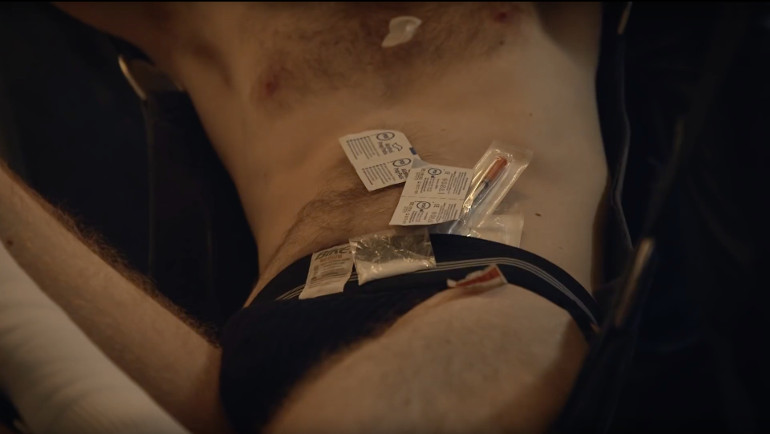
Chemsex Is Not New
“I suppose the thing to remember about chemsex is that mixing drugs and sex is not new. That’s been going on for a long, long time. What is new is the drugs that men are taking and new psychoactive substances becoming available.
“What’s also new is the term ‘chemsex’. MSMs using social contact websites have come up with this term themselves.
“We would encourage men to make informed choices about the drugs they choose to use because with some of them, like GHB, it does increase your libido and there’s a loss of inhibition, so people will do things they don’t normally do, such as unprotected anal sex, which has a high risk of HIV.
Informed Decisions
“But again, it’s about making sure men have the information available to make those informed choices and decisions.
“It’s also about getting this message out there about PEP (post-exposure prophylaxis), so that if you wake up on Sunday morning after having a chemsex party with many men the night before, you’ll know the information about PEP: where to get it, that it’s free and that you can stop HIV infections by taking it up to 72 hours after having unprotected sex.”
Act Up Ireland are lobbying for PrEP. Keep reading to find out more about the HIV preventing drug.
Act Up, Now
Just before GCN went to press, Act Up Ireland, a grassroots campaign aiming to lobby the government to introduce PrEP treatments such as Truvada to Ireland held its rst community meeting.
PrEP (Pre-exposure prophylaxis) is when people at very high risk for HIV take HIV medicines daily to lower their chances of getting infected.
Thousands of MSMs in America, where PrEP has been FDA approved since 2012, take one pill a day to prevent themselves from becoming infected thorugh unprotected sex, or take pills before and after a time when they expect to engage in risky sexual behaviour.
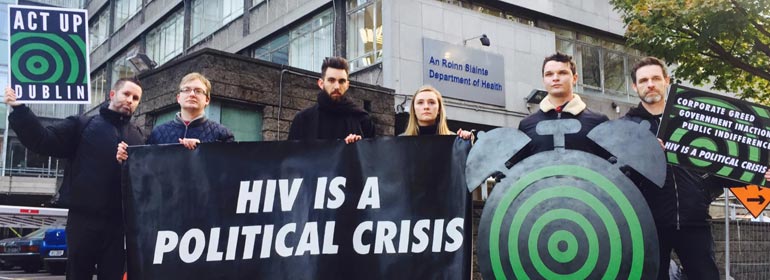
PEP But Not PrEP
Currently Irish MSMs can avail of PeP (post-exposure prophylaxis) drugs, which involves antiretroviral medicines (ART) after being potentially exposed to HIV to prevent becoming infected, but importing PrEP from the UK and other places is a legal grey area.
Anger was high at the meeting, with some members of the community claiming the delay in approving PrEP,along with a lack of widespread knoweldge about the drug, amounted to governmental homophobia.
However, the clear message that came from that meeting was that PrEP should be part of a larger, more holistic approach to tackling HIV, based in prevention.
Given that the vast majority of new infections are spread by people who do not know they’re HIV positive, a culture of testing (with free test sites across the country) along with a culture of self-care (which may include PrEP), founded upon solid prevention campaigns, is the way forward.
One thing is clear: from the vast number of those who turned out for the first Act Up meeting, HIV and its prevention is becoming the biggest single issue facing the LGBT community once more.
© 2016 GCN (Gay Community News). All rights reserved.

